X is for Xylophone
X is the next letter in the A to Z Science series for toddlers and preschoolers at Inspiration Laboratories. X is for xylophone. Have fun exploring sound using the xylophone activities below.
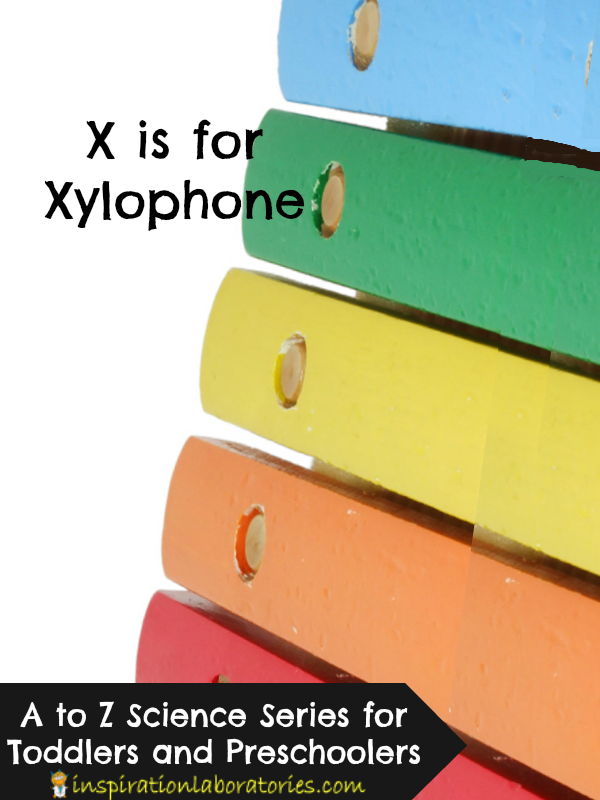
X is for Xylophone – Exploring Sound
Set out a xylophone and allow your child to explore it. For young toddlers, that’s all that you need to do. Show them how it makes sound and allow them to play with you. They are learning about cause and effect and making observations about sound and instruments.

We got this xylophone in a Kiwi Crate a few years ago. It’s a pretty simple design – a few pieces of wood, rubber bands, a box, and craft stick mallets.

Have older toddlers and preschoolers make observations about the xylophone.
Ask questions like these:
- What do you observe about the xylophone? What can you tell me about the xylophone?
- It’s made of wood (or metal). The pieces of wood are different sizes. They are in order from longest to shortest. They make a sound when you hit them.
- What happens when you hit the xylophone with a mallet?
- A sound is made when you hit the keys of the xylophone.
- Tell me about the sounds that are made? Are they all the same? How are they different?
Talk to your child about the pitch of each xylophone key. Pitch describes how high or low the sound is. Ask: which key sounds the lowest (has the lowest pitch)? Which is the highest? The longest key has the lowest pitch and the shortest key has the highest pitch.
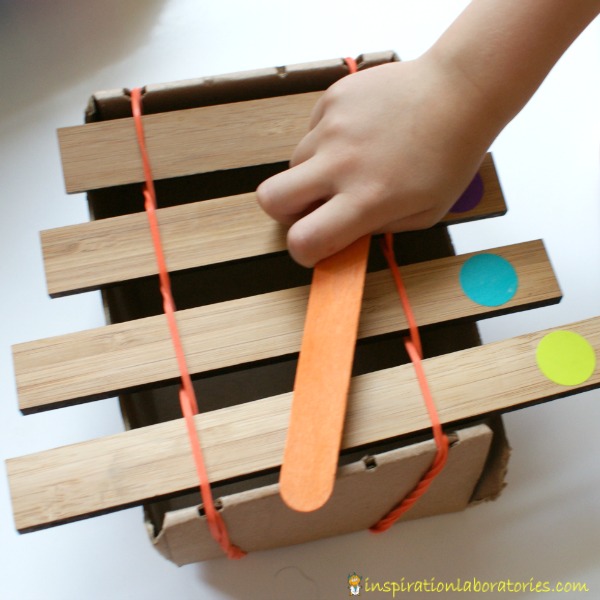
Show your child how the xylophone keys are in order from longest to shortest – from lowest to highest pitch. What if we had a key that was this long (choose an object like a craft stick to reference)? Where would this key be placed on the xylophone? Have your child compare the size of the new key to the xylophone keys.
Song Writing and Patterns
Teach your child how to write down the song he just created. Our xylophone has colored dots on the keys. The metal toy “xylophones” have colored keys. Use the colors to represent notes.
I wrote down the song Aiden was playing: green- blue- purple- purple- purple
Repeat this order and you’ll have a pattern (and a song).
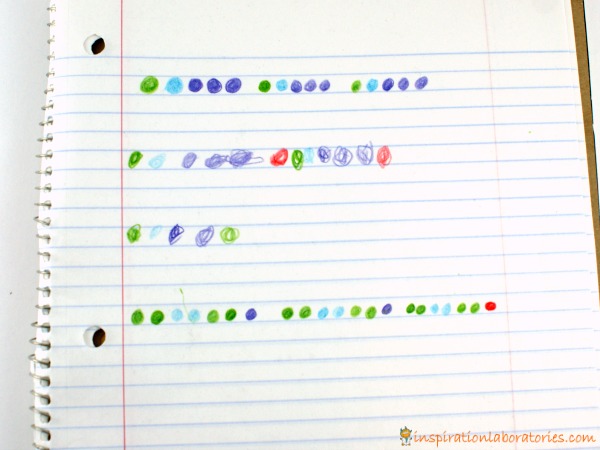
Aiden wrote down a few of his own songs and had me create one as well.
Green- green- blue- blue- green- green- purple Green- green- blue- blue- green- green- purple Green- green- blue- blue- green- green- RED
I changed the pattern and played a different note at the end. I had Aiden listen and see if he could pick up the difference.
If you don’t have a wooden xylophone, use a toy xylophone made of metal or make one of your own. You’ll be able to have fun exploring sound with any kind.
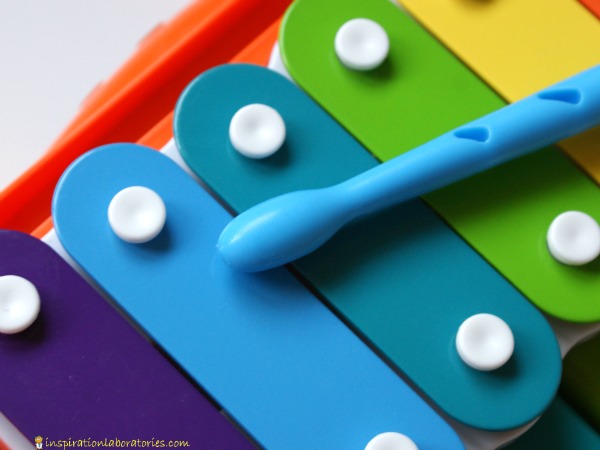
Make Your Own Xylophone
Technically, a xylophone is made of wood. Don’t worry about that. Try your hand at making any of these xylophone-like instruments at home for your kids.
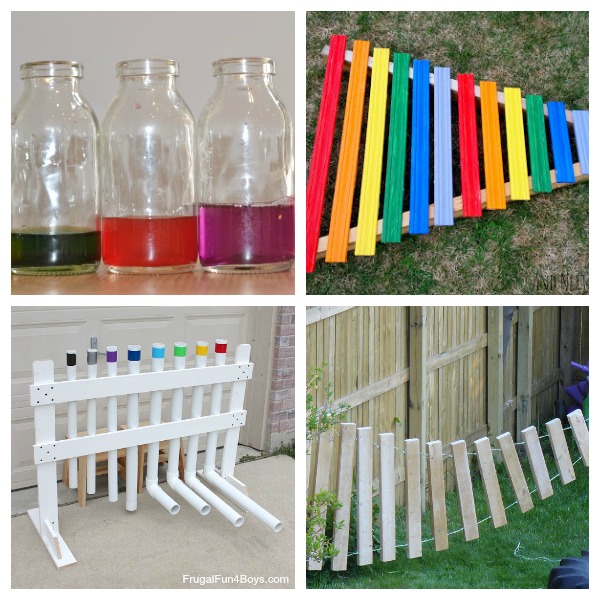
Make a bottle xylophone with instructions from Science Sparks.
Make a rainbow xylophone using window casings. And Next Come L has the details.
Build a PVC pipe xylophone like this one from Frugal Fun for Boys.
Take a giant wooden xylophone outside to play. See how to build it from Child Central Station.
More Preschool Science Ideas
- Try these activities to practice measuring.
- Work on observation skills with these ideas.
- Recognize that children are natural scientists – create an invitation for them to explore and use science tools.
Subscribe to our weekly newsletter and get exclusive science explorations for young scientists in each issue.
![]()

Leave a Reply